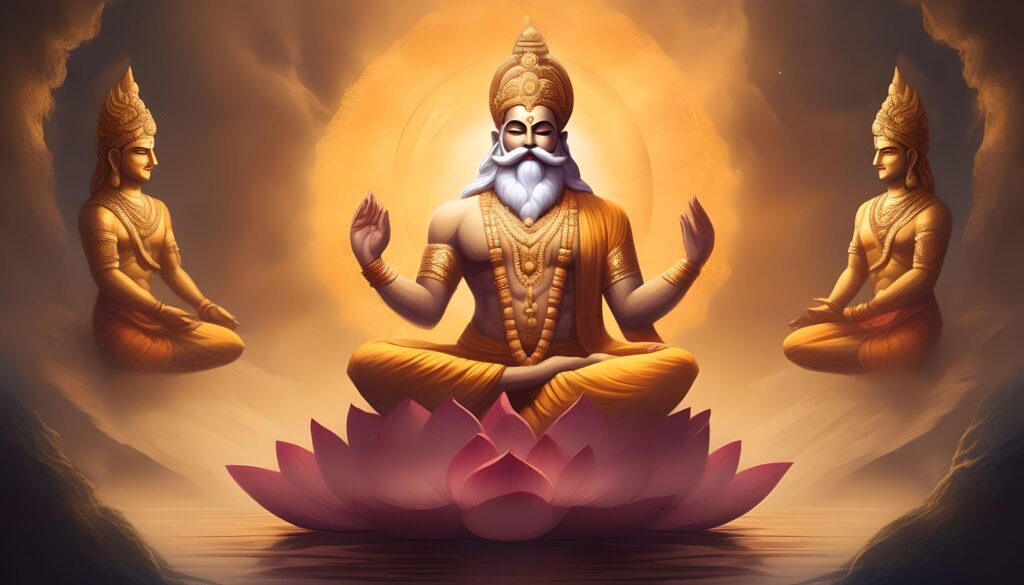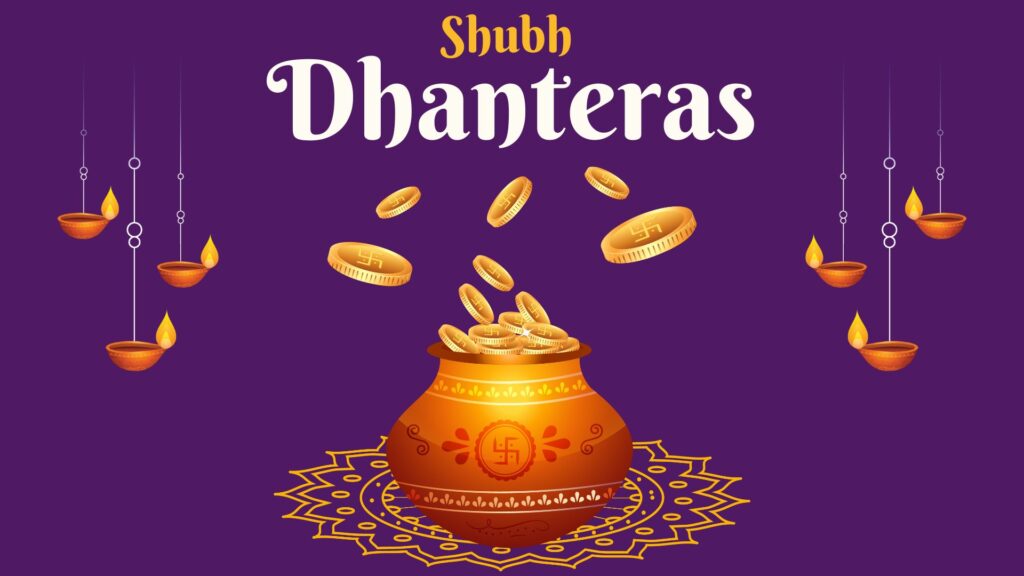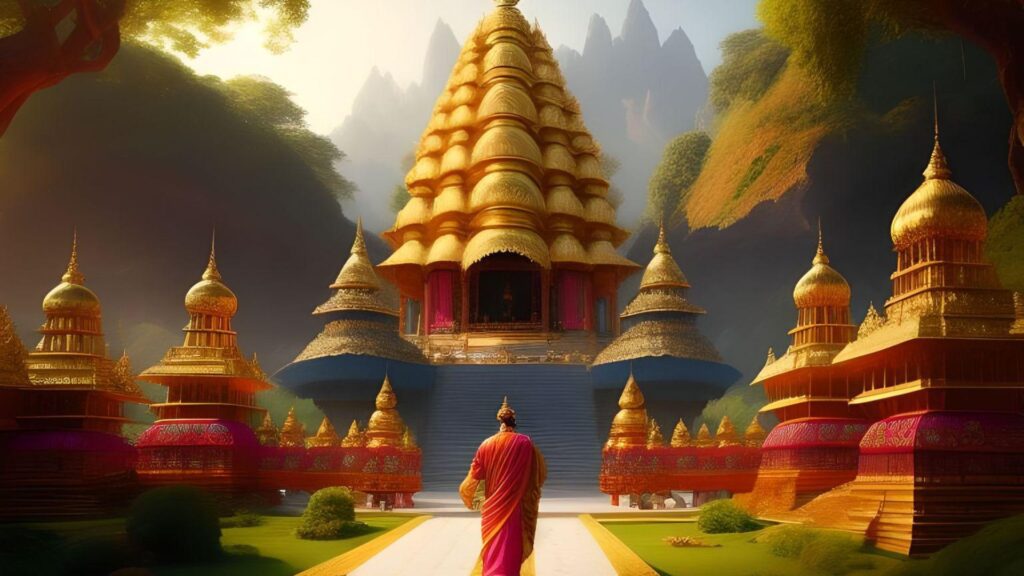Hindu Saints and Gurus: A Spiritual Journey Through Time
Introduction:
Throughout its extensive history, Hinduism, one of the world’s oldest religions, has been influenced and directed by a multitude of sages and gurus. Spiritual luminaries of this lineage have significantly influenced Hindu culture, philosophy, and society. This article undertakes an extensive investigation into the teachings and lives of several esteemed Hindu saints and mentors. We explore the profound spiritual insights, contributions, and lasting legacies of personalities ranging from Adi Shankaracharya to Guru Gobind Singh. Become a participant in our exploration of the fundamental principles that underpin Hindu spirituality and acquire a more profound comprehension of the profound insights bestowed by these esteemed individuals.
Adi Shankaracharya: The Revivalist of Hinduism
Adi Shankaracharya (788-820 C.E.) is widely regarded as a preeminent spiritual leader and philosopher within the Hindu faith. His collaboration with Ramanuja Acharya and Madhvacharya was instrumental in the resurgence of Hinduism amidst a period characterized by profound philosophical and intellectual obstacles. The teachings of Adi Shankaracharya placed significant emphasis on the Advaita Vedanta doctrine, which posits that reality is not dual. The ultimate truth, according to his philosophy, is the correspondence between the individual personality (Atman) and the universal consciousness (Brahman).
Originating from Kerala, Adi Shankaracharya remains a source of inspiration for those in pursuit of self-realization through his profound spiritual insights and commentary on ancient Hindu scriptures, including the Upanishads and the Bhagavad Gita. His teachings emphasized the significance of attaining spiritual enlightenment through self-reflection and the realization of one’s true nature, as well as the illusory nature of the material world.
Ramanuja Acharya: The Venerated Acharya of Sri Vaishnavism
Shri Ramanuja Acharya (1017-1137 C.E.) is considered to be among the most esteemed Acharyas within the Sri Vaishnavist philosophical tradition. His impact on the Bhakti movement and the dissemination of Vaishnavism was tremendous. The devotional path (Bhakti) was emphasized in the teachings of Ramanuja Acharya as a method to achieve salvation. He espoused the position of submitting to the benevolent power of Lord Vishnu and cultivating a profound connection with the Supreme.
The philosophical writings of Ramanuja Acharya, including the Sri Bhashya, offered profound understandings regarding the ego, the universe, and the ultimate reality. The teachings of the individual placed significant emphasis on the Vishishtadvaita doctrine, which asserts that the soul (Atman) is inextricably linked to the Supreme Soul (Paramatman) and that liberation is achievable by means of devotion, knowledge, and virtuous conduct.
Madhvacharya: The Proponent of Dvaita Vedanta
A distinguished philosopher and theologian, Shri Madhvacharya (1238-1317 C.E.) popularized the Dvaita Vedanta philosophy. The instructor placed significant emphasis on the dualistic essence of reality, positing an eternal differentiation between the personal soul (Jiva) and the supreme being (Brahman). Madhvacharya’s philosophical tenets maintained the conviction regarding the supreme nature of Lord Vishnu as the pinnacle of divinity.
The Tattvavada, among other works authored by Madhvacharya, furnished an all-encompassing structure that elucidated the interconnections among the material realm, the consciousness of the individual, and the Supreme Being. He placed significant emphasis on the study of scriptures, devotion, and virtue as crucial factors in achieving liberation and establishing an eternal connection with the Supreme Being.
Mahavir: The 24th Tirthankara of Jainism
In Jainism, Mahavir (599-527 B.C.) is commonly venerated as the 24th and final Tirthankara. At the age of 30, Mahavir, who was born into a noble family in Bihar, renounced the material world and began a journey of profound spiritual inquiry. The principles of non-violence (Ahimsa), veracity (Satya), and non-attachment (Aparigraha) were emphasized in his teachings.
The teachings of Mahavir pertaining to Jainism were centered on the eternal cycle of birth and death and the concept of Karma. He espoused the adoption of ascetic principles, self-control, and the rejection of materialistic ambitions as strategies to achieve liberation from the recurring pattern of rebirth. The enduring influence of Mahavir’s profound spiritual teachings on Jain adherents is evident in their daily pursuit of spiritual sanctity, nonviolence, and compassion.
Gautama Buddha: The Enlightened One
In Jainism, Mahavir (599-527 B.C.) is commonly venerated as the 24th and final Tirthankara. At the age of 30, Mahavir, who was born into a noble family in Bihar, renounced the material world and began a journey of profound spiritual inquiry. The principles of non-violence (Ahimsa), veracity (Satya), and non-attachment (Aparigraha) were emphasized in his teachings.
The teachings of Mahavir pertaining to Jainism were centered on the eternal cycle of birth and death and the concept of Karma. He espoused the adoption of ascetic principles, self-control, and the rejection of materialistic ambitions as strategies to achieve liberation from the recurring pattern of rebirth. The enduring influence of Mahavir’s profound spiritual teachings on Jain adherents is evident in their daily pursuit of spiritual sanctity, nonviolence, and compassion.
Vallabhacharya: The Founder of Pushti Sect
In Jainism, Mahavir (599-527 B.C.) is commonly venerated as the 24th and final Tirthankara. At the age of 30, Mahavir, who was born into a noble family in Bihar, renounced the material world and began a journey of profound spiritual inquiry. The principles of non-violence (Ahimsa), veracity (Satya), and non-attachment (Aparigraha) were emphasized in his teachings.
The teachings of Mahavir pertaining to Jainism were centered on the eternal cycle of birth and death and the concept of Karma. He espoused the adoption of ascetic principles, self-control, and the rejection of materialistic ambitions as strategies to achieve liberation from the recurring pattern of rebirth. The enduring influence of Mahavir’s profound spiritual teachings on Jain adherents is evident in their daily pursuit of spiritual sanctity, nonviolence, and compassion.
Maharshi Valmiki: The Author of Ramayana
An eminent philosopher, Maharshi Valmiki, is held in high esteem for penning the epic Ramayana. Comprising 24,000 verses and seven cantos, this antiquated Sanskrit manuscript recounts the exploits and life of Lord Rama, the seventh manifestation of Lord Vishnu. In addition to providing generations with entertainment, Valmiki’s Ramayana has also imparted profound spiritual and moral guidance.
The themes of righteousness, devotion, and the victory of good over evil are all explored in The Ramayana. It emphasizes the value of dharma (morality) and the virtuous qualities of loyalty, honesty, and honor. The epic authored by Valmiki functions as a wellspring of motivation, imparting guidance to individuals on how to live a morally upright and virtuous existence.
Tulsidas: The Poet Saint of Lord Rama
As a Hindu poet and saint, Tulsidas (1497-1623 CE) is renowned for his devotion to Lord Rama and his magnum composition, the Ramcharitmanas. Composed in Awadhi, a Hindi dialect, the Ramcharitmanas is a refined paraphrase of the Ramayana that exudes spiritual insights and devotional fervor.
In addition to recounting the celestial exploits of Lord Rama, Tulsidas’ Ramcharitmanas offers profound insights into the virtues of devotion, righteousness, and the journey towards self-actualization. Millions of individuals continue to recite his devotional hymns and couplets, including the Hanuman Chalisa, which serves as an inspiration to foster a more profound union with the divine.
Guru Ravidas: The Saint of the Bhakti Movement
Guru Ravidas (1377-1527 C.E.) was a highly esteemed sage associated with the Bhakti Movement, an order that advocated for spiritual liberation through the practice of love and devotion. Guru Ravidas, who was born into a family of leather laborers, advocated for equality and social justice while challenging the social hierarchy of his time.
“Shabads,” which are devotional compositions authored by Guru Ravidas, are highly regarded as spiritual jewels that surpass social, religious, and caste distinctions. His teachings emphasized the significance of altruistic service, compassion, and love, as well as the unity of all beings. Guru Ravidas’ profound spiritual teachings persistently counsel individuals on liberating themselves from the constraints imposed by society and upholding the universal ideals of compassion and egalitarianism.
Sant Kabirdas: The Poet Saint and Social Reformer
Saint Sant Kabirdas (1440-1518 approximately) was a renowned poet, social reformer, and saint of India. He preached a message of unity, tolerance, and the oneness of God after being born into a Muslim family. Kabir’s pedagogical philosophies, encapsulated in his poetic “Dohas,” amalgamated tenets of Islam and Hinduism, thereby surpassing sectarian limitations.
External rituals and practices were deemed futile in Kabir’s Dohas, which emphasized the value of direct experiential knowledge of the transcendent. His teachings emphasized the universal presence of the sacred within every being and the unity of all religions. The enduring influence of Sant Kabirdas’ profound spiritual insights transcends religious affiliations, promoting unity and a more profound comprehension of the spiritual essence that binds all people together.
Kavi Surdas: The Devotional Poet of Lord Krishna
Surdas, a poet and musician of distinction, composed devotional compositions devoted to Lord Krishna between 1478 and 1581 CE. Surdas, who was born blind, defied his physical constraints in order to craft resplendent verses that articulated his profound affection and allegiance to Lord Krishna. The spiritual resonance and profound emotional impact of his compositions, which are referred to as “Surdas Ke Pad,” earn him sacred esteem.
Surdas’ poetry encapsulates the eternal love between the devotee and the divine by recounting the divine leelas (joyous deeds) of Lord Krishna. The poet’s verses elicit a variety of sentiments, engrossing the audience member in the transcendent rapture that Lord Krishna’s devotees encountered. The devotional poetry of Surdas remains a source of spiritual bliss and a conduit to the divine, as it is chanted and cherished by millions.
Meera Bai: The Devotee of Lord Krishna
Meerabai, who lived around 1498-1547, was an eminent Hindu poet and fervent devotee of Lord Krishna. She was also known as Meera. Belonging to a regal Rajput lineage, she wholeheartedly abstained from material concerns in order to pursue a spiritual union with Lord Krishna and a life of devotion. The “Meera Bhajans,” which are Meerabai’s compositions, manifest her profound yearning for communion with the divine.
Devotional melodies by Meerabai are distinguished by their straightforwardness, chastity, and profound emotional intensity. The poet recounts her encounters with divine love, the difficulties and hardships encountered along the way of devotion, and her ultimate submission to the divine will via her poetry. Meerabai’s steadfast devotion and unyielding faith persistently motivate followers across the globe, offering guidance in the pursuit of profundity, submission, and spiritual satisfaction.
Chaitanya Mahaprabhu: The Founder of Gaudiya Vaishnavism
Chaitanya Mahaprabhu (1486-1534 C.E.) established Gaudiya Vaishnavism and was a distinguished spiritual instructor. As methods to achieve spiritual enlightenment, his teachings emphasized the path of devotion (Bhakti) and the chanting of the sacred names of Lord Krishna. The profound devotion and ecstatic love that Chaitanya Mahaprabhu exhibited towards Lord Krishna served as a source of inspiration for innumerable devotees, motivating them to embark on the path of devotion.
The philosophy of Chaitanya Mahaprabhu, referred to as Achintya Bheda Abheda, clarifies the dual nature of the individual soul and the Supreme Soul, revealing their simultaneous unity and distinction. He espoused the use of congregational chanting of the Hare Krishna mantra as an efficacious method to cleanse the heart and reawaken an individual’s latent affection for God. The Gaudiya Vaishnavas, who are Chaitanya Mahaprabhu’s devotees, persist in applying his teachings with the intention of disseminating the message of devotion, spiritual unity, and love.
Jhulelal: The Divine Protector of Sindhis
Varun Dev, also referred to as Jhulelal, is a deity held in high esteem within the Sindhi community. Cheti Chand, or Jhulelal Jayanti, is a yearly festival observed by the Sindhi people as a tribute to this celestial being. It is believed that Jhulelal, who was venerated as the divine protector of the Sindhis, ensured their safety amidst periods of persecution and hardship.
The Cheti Chand festival is emblematic of the triumph of virtue over evil and fresh starts. It is widely observed with considerable jubilation, encompassing communal feasts, processions, music, and dance. The Sindhi community remains unified and inspired by the divine protection and grace of Jhulelal, which fosters a stronger sense of spiritual devotion and cultural identity.
Tailang Swami: The Yogi with Divine Powers
Tailang Swami (1607-1887 C.E.) was a highly regarded Yogi of Hinduism renowned for his extraordinary celestial abilities. His extraordinary longevity was renowned for bestowing upon him the appearance of youth despite his advanced years. A multitude of disciples were drawn to Tailang Swami by his yogic disciplines and spiritual practices, desiring his counsel on the path to self-realization.
The life of Tailang Swami exemplifies the profound capacity of yogic practices and their capacity to effectuate profound changes in an individual’s physical, mental, and spiritual welfare. The implementation of self-control, introspection, and the reawakening of latent spiritual forces were focal points of his teachings. The extraordinary life of Tailang Swami continues to motivate individuals to delve into the profound realms of their spiritual capabilities and encounter the divine within.
Ramakrishna Paramhansa: The Eclectic Saint of 19th Century India
Ramakrishna Paramhansa (1836-1886 C.E.) was a renowned sage who personified the principles of Christianity, Islam, and Hinduism, among others. His spiritual odyssey was marked by profound mystical encounters, such as samadhi and divine communion. Ramakrishna’s teachings underscored the universality of the divine experience and the harmony that transcends religious boundaries.
Swami Vivekananda, a disciple of Ramakrishna, was instrumental in the revelation of his teachings and the formation of the Ramakrishna Mission. The mission is committed to the betterment of those less fortunate, altruistic action, and the service of humanity. Ramakrishna Paramhansa’s teachings persistently motivate people of various cultural and spiritual backgrounds, promoting an atmosphere of acceptance, affection, and inquiry.
Guru Nanak: The Founder of Sikhism
Guru Nanak (1469-1539 CE) is widely regarded as the inaugural Sikh Guru and the progenitor of Sikhism. Guru Nanak, who was born in Punjab, put forth teachings that underscored the significance of devotion, righteousness, and the quest for truth. His profound spiritual understandings established the cornerstone of the Sikh religion, an amalgamation of Hindu and Islamic tenets.
Guru Nanak’s teachings prioritized the significance of selfless service, the pursuit of a virtuous and honest livelihood, and the conviction in a single God. He disseminated the notion of “Naam Japna,” which entails the perpetual remembrance and chanting of the divine name, with the intention of achieving spiritual enlightenment. Guru Nanak’s enduring influence continues to direct millions of Sikhs across the globe toward self-realization, compassion, and devotion.
Guru Gobind Singh: The Tenth Guru of the Sikhs
Guru Gobind Singh (1666-1708 C.E.) significantly influenced the development of the Sikh faith as its tenth Guru. He established the Khalsa, a community of initiated Sikhs, in a structured manner and imbued his adherents with the values of bravery, moral rectitude, and self-preservation.
The teachings of Guru Gobind Singh placed significant emphasis on the criticality of resisting injustice and safeguarding those who are vulnerable or oppressed. In addition, he compiled the Sikhism sacred book, the Guru Granth Sahib, and proclaimed it the eternal Guru of the Sikhs. The legacy of Guru Gobind Singh continues to motivate Sikhs across the globe to adhere to the tenets of Sikhism, advocate for justice, and conduct themselves with honesty and empathy.
Conclusion
Hinduism, through its extensive spiritual lineage, has been significantly influenced by the counsel and revelations of a multitude of sages and gurus. These luminaries, ranging from Adi Shankaracharya to Guru Gobind Singh, have significantly influenced the spiritual tapestry of Hindu society. Seekers persist in being guided and inspired along the path to self-realization, devotion, love, and the pursuit of truth by means of their teachings. By exploring the lives and philosophies of these esteemed individuals, we develop a more profound comprehension of the enduring wisdom that they bestowed, thereby nurturing an enhanced admiration for the multifariousness and profundity of Hinduism.








